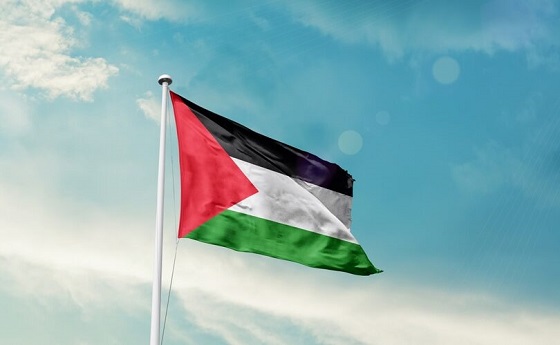Alberta
Alberta relaunch moves into Stage Two on Friday
From the Province of Alberta
Alberta moves to stage two of relaunch
Strong testing data shows active COVID-19 cases in Alberta are lower than expected, meaning stage two of the relaunch strategy can safely begin on June 12, a week sooner than expected.
Albertans can enjoy additional activities in their daily lives while the province continues to open up the economy.
“Albertans have demonstrated the care and common sense needed to move forward with our relaunch earlier than initially planned. Our data tells us our active cases are low, hospitalizations are trending downward and people are taking action to protect those most vulnerable and prevent the spread of the virus. We will continue to move forward together to overcome any tough times ahead, but responsible Albertans should be proud of the vigilance they have shown to date.”
Current data from June 8 show only 355 active cases and 44 people in hospital across Alberta. This is a decrease of almost 70 per cent in active cases since May 14 – when the province began stage one of the Alberta Relaunch Strategy. With its robust approach to testing, Alberta has performed more COVID-19 tests per capita than most other jurisdictions in the world.
As the province enters stage two of relaunch, safety remains the top priority. More businesses, sport and recreation services can open if they are ready. Some larger gatherings for seated audience events will be permitted. In all cases, public health guidance must be followed.
A new interactive map will help Albertans understand the level of risk in their community and learn about any enhanced health measures at the local level, giving additional information on what they need to do to keep themselves and their loved ones safe and protected. Currently, no communities in Alberta need locally targeted enhanced measures.
“More Albertans can now return to work and to the activities so many of us enjoy. However, I encourage you to do it safely. Think of the people in your life who may be at high risk from COVID-19 and protect all those around you as you would want your loved ones protected. Stay home if you are sick. Stay two metres apart and wear a non-medical mask if you can’t. Consider downloading the ABTraceTogether app, and wash your hands often.”
What can open with restrictions
- K-12 schools, for requested diploma exams and summer school, following guidance
- Libraries
- More surgeries
- Wellness services such as massage, acupuncture and reflexology
- Personal services (esthetics, cosmetic skin and body treatments, manicures, pedicures, waxing, facial treatment, artificial tanning)
- Indoor recreation, fitness, and sports, including gyms and arenas
- Movie theatres and theatres
- Community halls
- Team sports
- Pools for leisure swimming
- VLTs in restaurants and bars
- Casinos and bingo halls (but not table games)
- Instrumental concerts
The 50 per cent capacity limit for provincial campgrounds is also being lifted. Over the coming days, the online reservation system will be updated and sites will come online in phases. By July 1, all camping sites will be open for reservations. First-come, first-served sites may open sooner. Information on additional sites will be added to alberta.parks.ca when they become available.
Events and gatherings can be larger in stage two
Maximum 50 people:
- Indoor social gatherings – including wedding and funeral receptions, and birthday parties
Maximum 100 people:
- Outdoor events and indoor seated/audience events – including wedding and funeral ceremonies
No cap on the number of people (with public health measures and physical distancing in place):
- Worship gatherings
- Restaurants, cafés, lounges and bars
- Casinos
- Bingo halls
There is more flexibility for ‘cohort’ groups – small groups of people whose members do not always keep two metres apart:
- A household can increase its close interactions with other households to a maximum of 15 people
- Performers can have a cohort of up to 50 people (cast members or performers)
- Sports teams can play in region-only cohorts of up to 50 players (mini leagues)
- People could be part of a sports/performing and household cohort
Everyone is encouraged to follow public health guidelines and notify others in the cohort(s) if they have symptoms or test positive for COVID-19. If they do test positive or have symptoms, mandatory isolation is required.
Still not approved in stage two
- Social gatherings that exceed above listed maximums
- Regular in-school classes for kindergarten to Grade 12. Classes will resume September 2020
- Vocal concerts (as singing carries a higher risk of transmission)
- Major festivals and concerts, large conferences, trade shows and events (as these are non-seated social events and/or vocal concerts)
- Nightclubs
- Amusement parks
- Hookah lounges (permitted for food and drink only)
- Major sporting events and tournaments
- Non-essential travel outside the province is not recommended. This recommendation will not be lifted until stage three of the relaunch strategy.
The success of stage two will determine when Alberta progresses to stage three. Factors are active cases, health-care system capacity, hospitalization and intensive care unit (ICU) cases, and infection rates. For more information, visit alberta.ca/RelaunchStrategy.
Quick facts
- Relaunch stages include an evaluation and monitoring period to determine if restrictions should be adjusted. Triggers that will inform decisions include active cases, hospitalizations and intensive care unit (ICU) occupancy.
- Active cases, the percentage of positive results and the rate of infection will be monitored to inform proactive responses in localized areas of the province.
- Decisions will be applied at both provincial and local levels, where necessary. While restrictions are gradually eased across the province, an outbreak may mean that they need to be strengthened temporarily in a local area.
- Physical distancing and good hygiene are the most important measures to prevent respiratory illnesses, including COVID-19.
- Clean your hands regularly for at least 20 seconds, avoid touching your face, cough or sneeze into your elbow or sleeve, and dispose of tissues appropriately.
Alberta
A Christmas wish list for health-care reform

From the Fraser Institute
By Nadeem Esmail and Mackenzie Moir
It’s an exciting time in Canadian health-care policy. But even the slew of new reforms in Alberta only go part of the way to using all the policy tools employed by high performing universal health-care systems.
For 2026, for the sake of Canadian patients, let’s hope Alberta stays the path on changes to how hospitals are paid and allowing some private purchases of health care, and that other provinces start to catch up.
While Alberta’s new reforms were welcome news this year, it’s clear Canada’s health-care system continued to struggle. Canadians were reminded by our annual comparison of health care systems that they pay for one of the developed world’s most expensive universal health-care systems, yet have some of the fewest physicians and hospital beds, while waiting in some of the longest queues.
And speaking of queues, wait times across Canada for non-emergency care reached the second-highest level ever measured at 28.6 weeks from general practitioner referral to actual treatment. That’s more than triple the wait of the early 1990s despite decades of government promises and spending commitments. Other work found that at least 23,746 patients died while waiting for care, and nearly 1.3 million Canadians left our overcrowded emergency rooms without being treated.
At least one province has shown a genuine willingness to do something about these problems.
The Smith government in Alberta announced early in the year that it would move towards paying hospitals per-patient treated as opposed to a fixed annual budget, a policy approach that Quebec has been working on for years. Albertans will also soon be able purchase, at least in a limited way, some diagnostic and surgical services for themselves, which is again already possible in Quebec. Alberta has also gone a step further by allowing physicians to work in both public and private settings.
While controversial in Canada, these approaches simply mirror what is being done in all of the developed world’s top-performing universal health-care systems. Australia, the Netherlands, Germany and Switzerland all pay their hospitals per patient treated, and allow patients the opportunity to purchase care privately if they wish. They all also have better and faster universally accessible health care than Canada’s provinces provide, while spending a little more (Switzerland) or less (Australia, Germany, the Netherlands) than we do.
While these reforms are clearly a step in the right direction, there’s more to be done.
Even if we include Alberta’s reforms, these countries still do some very important things differently.
Critically, all of these countries expect patients to pay a small amount for their universally accessible services. The reasoning is straightforward: we all spend our own money more carefully than we spend someone else’s, and patients will make more informed decisions about when and where it’s best to access the health-care system when they have to pay a little out of pocket.
The evidence around this policy is clear—with appropriate safeguards to protect the very ill and exemptions for lower-income and other vulnerable populations, the demand for outpatient healthcare services falls, reducing delays and freeing up resources for others.
Charging patients even small amounts for care would of course violate the Canada Health Act, but it would also emulate the approach of 100 per cent of the developed world’s top-performing health-care systems. In this case, violating outdated federal policy means better universal health care for Canadians.
These top-performing countries also see the private sector and innovative entrepreneurs as partners in delivering universal health care. A relationship that is far different from the limited individual contracts some provinces have with private clinics and surgical centres to provide care in Canada. In these other countries, even full-service hospitals are operated by private providers. Importantly, partnering with innovative private providers, even hospitals, to deliver universal health care does not violate the Canada Health Act.
So, while Alberta has made strides this past year moving towards the well-established higher performance policy approach followed elsewhere, the Smith government remains at least a couple steps short of truly adopting a more Australian or European approach for health care. And other provinces have yet to even get to where Alberta will soon be.
Let’s hope in 2026 that Alberta keeps moving towards a truly world class universal health-care experience for patients, and that the other provinces catch up.
Alberta
Calgary’s new city council votes to ban foreign flags at government buildings

From LifeSiteNews
It is not yet clear if the flag motion applies to other flags, such as LGBT ones.
Western Canada’s largest city has put in place what amounts to a ban on politically charged flags from flying at city-owned buildings.
“Calgary’s Flag Policy means any country recognized by Canada may have their flag flown at City Hall on their national day,” said Calgary’s new mayor Jeromy Farkas on X last month.
“But national flag-raisings are now creating division. Next week, we’ll move to end national flag-raisings at City Hall to keep this a safe, welcoming space for all.”
The motion to ban foreign flags from flying at government buildings was introduced on December 15 by Calgary councilor Dan McLean and passed by a vote of 8 to 7. He had said the previous policy to allow non-Canadian flags to fly, under former woke mayor Jyoti Gondek, was “source of division within our community.”
“In recent months, this practice has been in use in ways that I’ve seen have inflamed tensions, including instances where flag raisings have been associated with anti-Semitic behavior and messaging,” McLean said during a recent council meeting.
The ban on flag raising came after the Palestinian flag was allowed to be raised at City Hall for the first time.
Farkas, shortly after being elected mayor in the fall of 2025, had promised that he wanted a new flag policy introduced in the city.
It is not yet clear if the flag motion applies to other flags, such as LGBT ones.
Despite Farkas putting forth the motion, as reported by LifeSiteNews he is very much in the pro-LGBT camp. However, he has promised to focus only on non-ideological issues during his term.
McLean urged that City Hall must be a place of “neutrality, unity, and respect” for everyone.
“When City Hall becomes a venue for geopolitical expressions, it places the city in the middle of conflicts that are well beyond our municipal mandates,” he said.
As reported by LifeSiteNews, other jurisdictions in Canada are considering banning non-Canadian flags from flying over public buildings.
Recently a political party in British Columbia, OneBC, introduced legislation to ban non-domestic government flags at public buildings in British Columbia.
Across Canada there has also been an ongoing issue with so-called “Pride” flags being raised at schools and city buildings.
-

 Agriculture1 day ago
Agriculture1 day agoWhy is Canada paying for dairy ‘losses’ during a boom?
-

 Automotive2 days ago
Automotive2 days agoFord’s EV Fiasco Fallout Hits Hard
-

 Alberta2 days ago
Alberta2 days agoAlberta’s new diagnostic policy appears to meet standard for Canada Health Act compliance
-

 Business19 hours ago
Business19 hours agoState of the Canadian Economy: Number of publicly listed companies in Canada down 32.7% since 2010
-

 Bruce Dowbiggin21 hours ago
Bruce Dowbiggin21 hours agoHunting Poilievre Covers For Upcoming Demographic Collapse After Boomers
-

 Alberta20 hours ago
Alberta20 hours agoHousing in Calgary and Edmonton remains expensive but more affordable than other cities
-

 Censorship Industrial Complex17 hours ago
Censorship Industrial Complex17 hours agoCanadian university censors free speech advocate who spoke out against Indigenous ‘mass grave’ hoax
-

 Censorship Industrial Complex2 days ago
Censorship Industrial Complex2 days agoTop constitutional lawyer warns against Liberal bills that could turn Canada into ‘police state’






